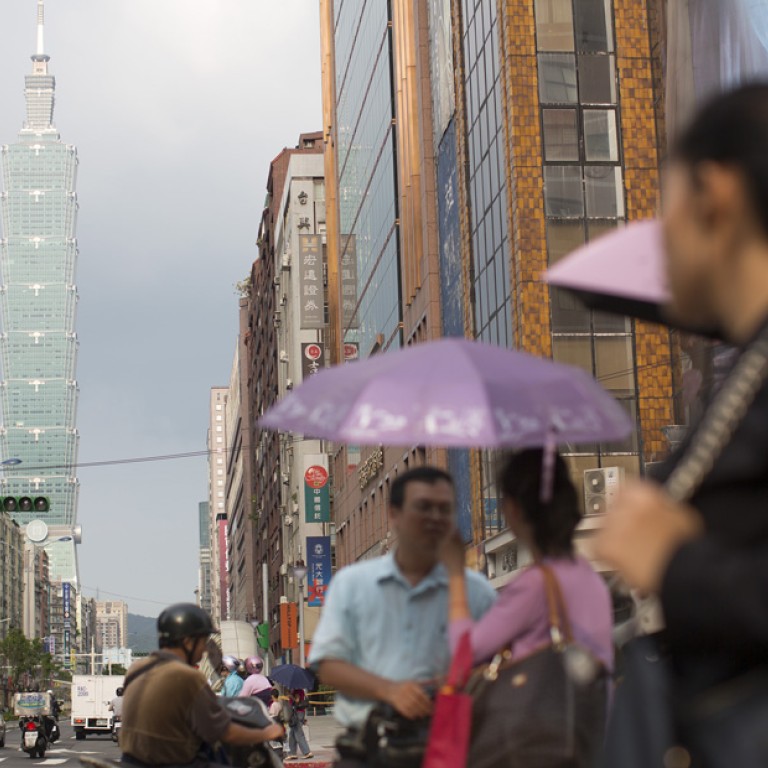
Taiwan must look beyond Korea to draw up its economic road map
Erik Tollefson says obsessive comparison with Korea, exaggerated by the K-pop fever, is unhelpful
Latent economic anxiety typically manifests itself in strange ways. The broadcast of the Korean television drama, , which tells of an alien who came to earth and fell in love with an actress, is a case in point.
The television series has besieged Taiwan: from fans obsessively commenting on the internet to newspapers debating the pathology of Taiwan's K-pop obsession, the show's popularity has struck an existential chord.
Indeed, the raucous debate has in a way intruded into the policy realm: at a recent Legislative Yuan hearing, National Development Council minister Kuan Chung-ming was asked about Taiwan's economic position in Asia and to expand on his previous comments that Taiwan had fallen behind Asian competitors, including Korea.
In truth, while Taiwan's policy focus on addressing economic challenges is warranted, continued reliance on historical economic comparisons, particularly with Korea, are likely to be counterproductive.
Korea and Taiwan have traditionally been classified as two of the four "tiger" economies of Asia, alongside Hong Kong and Singapore. They emerged on the global scene in the 1970s and 1980s on the back of explosive, export-based growth. The results were impressive: from 1965 to 1980, Korea's and Taiwan's economies grew, on average, at around 10 per cent per year.
The high rates of growth, however, camouflaged how their economic development models differed. The South Korean government played an aggressive role not only in strategically selecting industries to compete in, but also aggregating capital (both human and financial) in the country's chaebols (conglomerates) through foreign borrowing. Although the government also played a strategic role in Taiwan, it was less heavy-handed; economic development was financed domestically, while small and medium-sized enterprises served as the main engine of growth.
The 1997 Asian financial crisis served as a key differentiator between the models: while Korea's dependence on high levels of foreign debt precipitated a national crisis, Taiwan weathered the storm relatively unscathed.
After the Korean government and chaebols successfully reformed, however, the situation looks different 15 years on. Korea's per capita gross domestic product has surpassed that of Taiwan, and the current gap is estimated to be up to US$2,000 per person. Korea also has a lower unemployment rate, although Taiwan arguably has higher productivity.
The economic dissonance may seem greater in Taiwan due to more intangible factors: the endless parade of Korean pop and movie stars promoting new releases, the saturation of the local electronics market with Korean goods, and the global emergence of Korean brands in developed markets. While Taiwan boosts its own cadre of multinational firms, a majority of their business is providing parts for well-known brands such as Apple, leading to lower value-added production and brand recognition worldwide.
As a result, Taiwan's economic road map is likely to differ from South Korea's, particularly as it faces barriers to manage globalisation. The main reason is the unclear and sometimes contentious relationship with Beijing. Indeed, while official economic relations between the two have been inconsistent, many Taiwanese have voted with their feet, taking valuable production, talent and capital to the mainland.
While this dynamic is slowly changing with agreements to deepen co-operation, the unsettled issue of sovereignty has still prevented Taiwan from engaging the global economy, particularly through free trade agreements.
This has led to a substantial divergence with South Korea: while Korea has signed 10 free trade agreements since 2003 and is currently in negotiations for 11 more, Taiwan has signed just six, with the hope of participating in the Trans-Pacific Partnership negotiations.
Without the key tool of free trade to expand its global footprint and streamline regulations, Taiwan's strategic choices focus on difficult domestic reforms, including developing human capital through increasing investment and attracting immigrants, as well as improving the business climate for foreign capital and start-ups.
Ultimately, any viable economic strategy is not likely to be furthered through anachronistic historical comparisons. Indeed, as it became evident that would become a hit among mainland Chinese and Taiwanese audiences, discussions began on a Chinese version that would mimic the drama's success.
But some Taiwanese entertainers have questioned the wisdom of merely copying, saying that it might put off more difficult decisions to boost the industry's competitiveness. Policymakers in Taiwan might benefit from a similar analysis: obsession typically leads one to lose focus.
